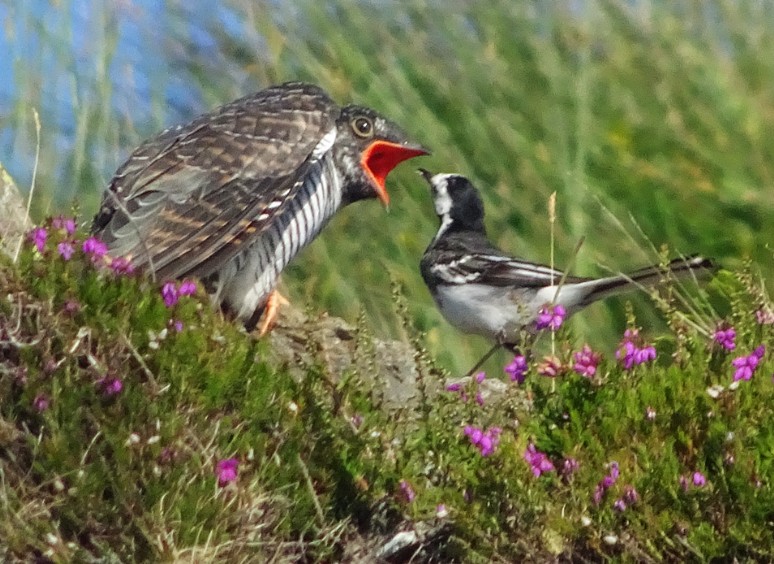More on Cuckoos
Reports

One of the species that people seem to require no encouragement to report is the Cuckoo. Few people are unfamiliar with its call and it is a sure sign that spring has arrived and summer is on its way. The first Cuckoos are usually heard in mid-April. This year on Arran it was the 16 April. The earliest record on the island was 8 April in 2017. Peak migration takes place in late April/early May and throughout this time and into June and early July, reports come in of calling males. Unlike other parts of the UK where it is in serious decline, the Cuckoo population on Arran seems to be thriving.
The well known feature of Cuckoos is that they lay their eggs in the nests of other species. In Arran they usually target Meadow Pipits, but over 50 species of host have been recorded in Britain. The young Cuckoo is brought up entirely by foster parents. The Cuckoo parents take no part. It is an astonishing piece of evolutionary behaviour, but perhaps even more mind boggling, is to consider that, once raised, the young Cuckoos in early August begin to make their own way to their ancestral wintering grounds in the tropics. No adult guides them. The adults have left weeks before. Not only that, the following spring these young from the previous summer return to northern Europe and are able to recognise and seek out a mate among their own kind.
It was almost one hundred years ago that Edgar Chance began his study of Cuckoos on a Worcestershire heath. With excellent field craft he watched females lay eggs in Meadow Pipit nests over several years and concluded that individual females each year were laying a single egg in around fifteen to twenty nests. In 1921 he captured the egg laying and nesting habits on film and in 1922 he published his ground breaking book The Cuckoo's Secret which detailed the parasitic nesting habits.
The migration habits of Cuckoo remained almost a complete mystery until 2011 when the British Trust for Ornithology (BTO) began to put light weight satellite tags on adult birds, enabling the birds to be tracked on migration. Two routes seem to be used, one through Spain and the other through Italy to their wintering areas in the Congo rainforest. You can follow the Cuckoos' progress and learn more about their journeys south in a way that was unimaginable a century ago. Go to "Tracking Cuckoos to Africa... and back again"
With Britain's breeding Cuckoo numbers having reduced by more than half in the last twenty-five years, this on-going research work may also give some insights into the reasons for this dramatic decline of breeding Cuckoo in the UK. Hopefully Arran will continue to remain a summer strong hold of this fascinating species.